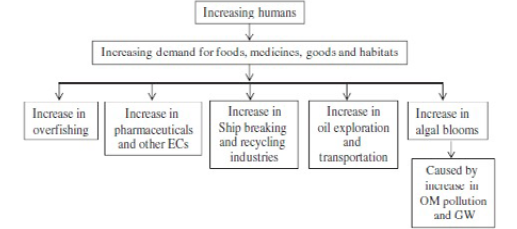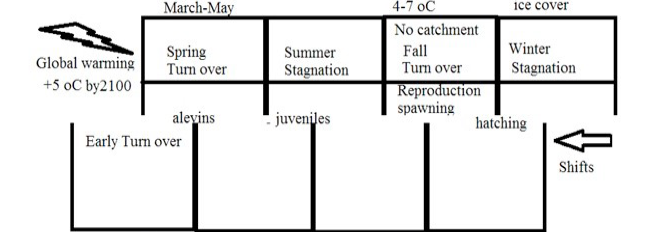Impact of Global Warming on Aquatic Animals
Impact of Global Warming on Aquatic Animals
Telat Yanik1,* and Irfan Aslan2
Conceptual model for direct and indirect effects of global changes on biodiversity. Shown are effects on ecosystem biodiversity from elevated nitrogen, CO2 and climate change (elevated temperature and changes in precipitation and hydrology). Predominant direction of effect is shown as positive (+), negative (-) or as a possible change in either direction (∆). Changes in nitrogen, CO2 and climate can influence biodiversity. Nitrogen and CO2 also can interact with climate to effect on biodiversity (Porter et al., 2013).
Effects of human on marine ecosystems (adapted from Khan et al. 2013).
Effects of climate warming on cold-water fish populations living in still waters. Stagnation period gets longer and H2S increases in deep areas, acidity increases with increase of CO2 emissions from atmosphere, available food reduces in time and spawning does not occur in normal timing or no spawning occurs due to elevated temperatures.













